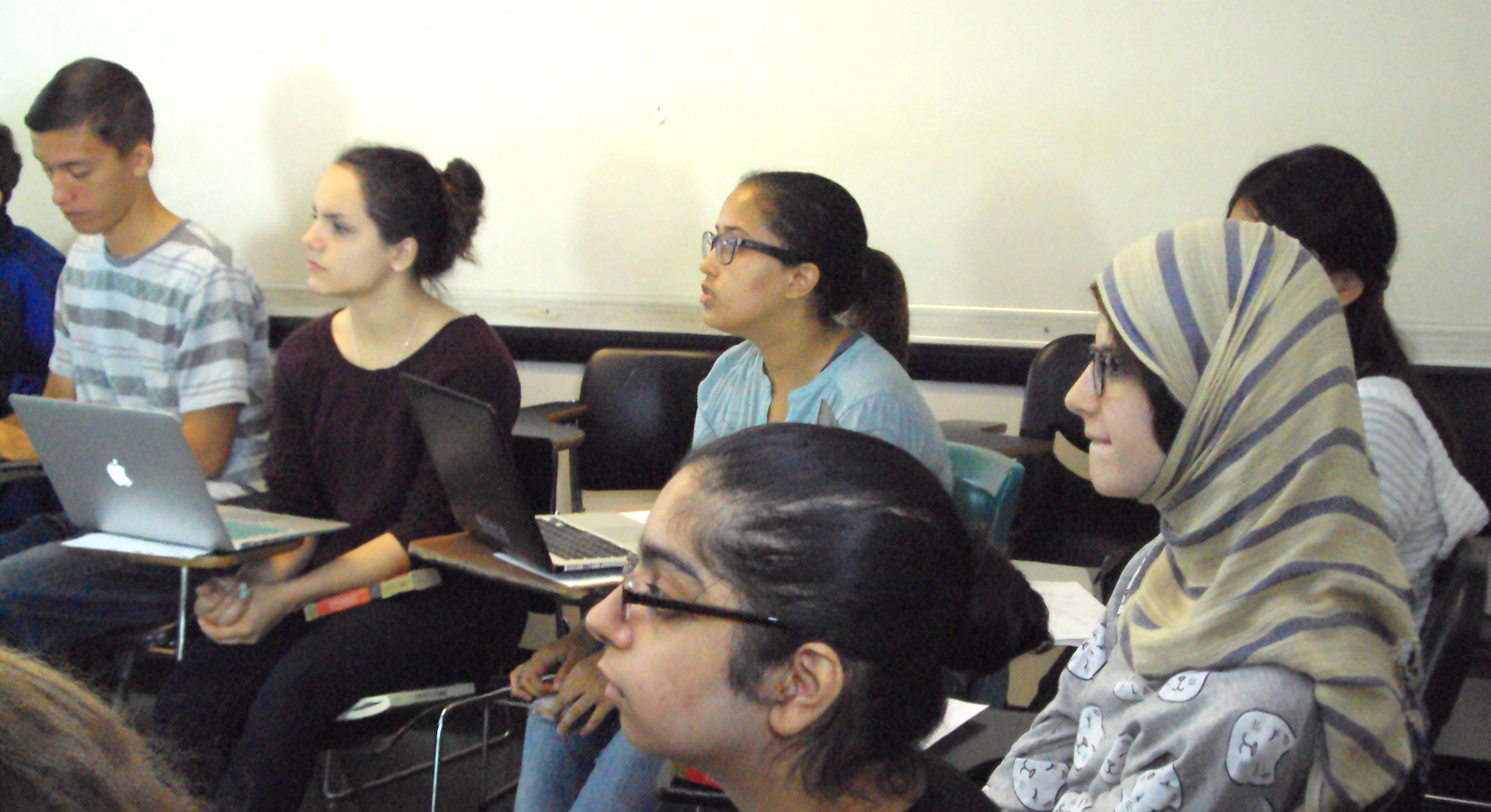Brushing Off the Dirt: Suraj Badtiya on Creating Space for Dalit Literature
Posted on October 27, 2025

In July 2025, WWB’s Jaideep Pandey spoke with Suraj Badtiya, author of the short story “Gujji” (translated from Hindi by John Vater). Badtiya’s “Gujji” traces a Dalit boy’s trajectory from butcher’s son to corporate employee at McDonald’s, illustrating the discrimination he experiences and the sacrifices he has to make along the way. In this conversation, Badtiya discussed his inspirations for the story’s main character and setting, his advocacy work for Dalit literature, and offered advice for young readers. (This interview was conducted in Hindi over Zoom and translated by Pandey.)
“Gujji” dwells a lot on experiences of caste, marginalization, and displacement in the urban environment of Delhi. Could you tell us how you imagine the city of Delhi, its history, and its many neighborhoods, and how they affected the way you wrote the story?
Delhi is truly a megalopolis, and it’s the country’s capital. If you look closely, Delhi doesn’t have any culture of its own, because people from different cities and provinces of India travel to Delhi to look for employment. People began coming to Delhi to look for work in large numbers after independence from the British in 1947, and they didn’t have anywhere to live. They would do odd jobs near our old historical buildings and settled in nearby slums (jhuggi). As the city slowly began to “develop,” the authorities realized that slums were a blot on any big, developed city. So, starting in the 1970s, they established what they called “resettlement colonies,” which are often called either JJ colonies (jhuggi jhopri—slums) or slum settlements.
The character of this story used to live in one such resettlement colony in Delhi, and because we used to study together, we became good friends. This resettlement colony was established after slums near the Red Fort and in Mayapuri and Naraina were demolished, and the residents were allocated a 67-square-foot space (22.5 guz), which is very small. This was somewhere in outer Delhi.
When he was a college student, he would often come and visit me. He was struggling a lot in those days. He had secured admission to a medical college, but he was forced to run an egg stall, and couldn’t enroll in college because he had no money. He tutored people, among many other odd jobs, to make ends meet and fund some kind of education. In the end, he finished a law degree and eventually became a professor. He once visited me after that, and he told me all about his struggles into the wee hours of the morning. I asked him, “Why don’t you write your story? A story about your achievements that could inspire people?” So, this is who the character is based on.
Could you tell us a bit about the reception of the story among Hindi readers and critics?
I sent this story to several magazines and they all refused to publish it. Finally, Sudish Pachauri, a famous Hindi literary critic and editor of the magazine Vaak (Speech), published the story with a special comment: “Suraj Badtiya’s story 'Gujji' sees Dalit lives within narratives of upward mobility—difficult but unstoppable.” After that, the story sparked a conversation among readers about the subject—a person from a community that sells Gujji. We have all grown up seeing Gujji hanging outside shops, but we didn’t know what it was. After this story, people realized that the pig is also an animal that is reared for food, and that people secretly eat it. Of course, people eat hot dogs at McDonald’s and all over Europe, but in India it’s viewed very differently. And this story also brought a new kind of aesthetics. Hindi literature is full of animals, but when an animal like the pig appears in a story, it requires a different kind of aesthetics and vision. This was a very positive debate that “Gujji” started and I received several letters telling me so, and requesting me to submit more stories like this one.
How do you view the promotion of Dalit literature in the larger context of Hindi literary history and trends? What role do you think literature can play in crafting a Dalit consciousness?
Let’s talk about aesthetics in this context. [Editor’s note: aesthetics is the philosophy of beauty. In this context, it refers to how we judge whether there is beauty or literary value in a piece of writing.] Things are always changing. There was a set of aesthetic properties a thousand years ago, but you can’t analyze contemporary literature by those same standards. Literature of the past decided the criteria and standards of literary style. For example, literature from several centuries ago established that writing needed to be embellished with figurative language in order to be called literature. But can today’s poetry be analyzed simply by the presence or absence of figurative writing—even beyond Dalit Literature?
The Marxist aesthetics that displaced these older styles in Hindi literature during the 1936 Progressive Writers’ Movement, emphasized techniques that could reflect the lives of the working classes. But the problem was that the Progressive aesthetics recognized the working classes, but didn’t see the caste-based discriminations that existed among them. What [the Progressive writers] did was try to view writing by Dalits, tribal peoples, and women from their own aesthetics, which led to a problem. They would say that the experiences of these groups were very powerful, but that their language and presentation were very poor. Or they would find it repetitive. On the one hand, you have the aesthetics of someone sitting and writing in a clean, plush home, and on the other, there are the aesthetics of those who clean the roads, go into sewage as manual scavengers and make your city beautiful and clean.
I worked with Bezwada Wilson, who won the Magasasay Award for working for the betterment of women working as manual scavengers. I thought to myself—when these women write literature, what would their aesthetic practices look like? This is a woman who carries human fecal waste on her head for a living. Will aesthetics be able to capture that experience of walking as human fecal waste drips down your head? When I was working with Wilson, I started a small magazine called Sangharsh (Struggle), and I tried to depict the experiences of those working as manual scavengers. It gave us goosebumps. I then published a special issue called “The India that Carries Human Shit.” To understand literature like this, critics need a different set of aesthetics. Otherwise, they will defensively say that the authors don’t know how to write and that their language has no beauty to it. But your notion of beauty, which compares a woman’s beauty to the moon, is not needed here! We need to describe the woman who has fecal waste dripping down her head. Therefore, I feel that we must see new kinds of aesthetics. This is an old debate, but it still comes up every now and then.
The problem now is that even those people from the so-called upper castes who come to help, do not come to cooperate but to become our leaders. They start teaching us how and what to write as Dalit literature. They have become the experts and critics of Dalit literature, and they are the ones who are invited to panel discussions, not Dalit people. Why don’t you call a Dalit writer or tribal writer who will be able to explain the experience much better? Phule once said, “The one who feels the pain is the only one who can describe it.”
You are the organizer for the Dalit Literary Festival, now in its fourth year. Could you tell us about your experience organizing the festival in a university space (which can uphold class and caste hierarchies as an institution, but can also be a site for progressive thinking and movements)?
I was the founder of that festival, and we decided to put it on after seeing many similar festivals for other kinds of literatures being organized with a lot of funding. The problem ahead of us was: can we even organize a festival? Another question was: why should we organize a festival? These literatures all speak against injustices—how can that be an occasion to celebrate? We debated these issues for a whole year. During that time, we got to go to Lahore to attend a conference as representatives. Our conversations there led to us finally deciding to organize a festival. But then, where should we organize it? And where will the money come from? We decided to try and host it at a college. At the time, we formed a committee, along with Professor Namdev at Kirori Mal College in Delhi, who was a member of the Ambedkarite Writers group. We made it clear to the Kirori Mal College administration that we didn’t oppose any specific group or community; we merely wanted to offer a shared platform for writers who were Dalit, Tribal, women, or from nomadic communities. The principal agreed, but chaos ensued. Several groups called in and wrote emails and letters to the principal to say that this festival would bring down the name of the college. Thankfully, though, it didn’t end up being canceled.
We had to do a lot of creative problem solving throughout the festival. For example, we held a fundraising drive to avoid sponsorship of any kind. We also named different auditoriums and halls after different people—for example, we had a Manto Hall, Omprakash Valmiki Hall, Clara Zetkin Hall, Nelson Mandela Hall. We tried to have an international outlook in this regard. We were grateful to the media, too, because they gave it a lot of good press. The actress and filmmaker Nandita Das even reached out to us, and expressed her desire to participate next time. It was a big challenge, but we faced it quite well, thanks to the support of a lot of people (including those of the so-called upper caste communities). We went on to organize four iterations of it, and are currently working on the fifth year. We realized that we had to face these challenges and overcome them, for that is how marginalized people have always moved forward in life.
What would you want your English readers, who might be unfamiliar with the realities of life in a casteist society, to take away from your story?
There are marginalized groups across the world. When we name our [conference] halls after Martin Luther King, or Nelson Mandela from South Africa, or people from the Burakumin community in Japan, it creates a relationship between the marginalized across the world, and sparks curiosity to know more about each other. This story will show American students that just as Black people were discriminated against because of their skin color and race, South Asia has been discriminating against people based on their occupation and caste.
It’s not like cleaning isn’t a profession in Europe or Japan or the US. But it’s a respected profession there. It is only within South Asian countries that people who work in cleaning possess no dignity in the eyes of others. Again, shoemakers have existed all over the world. They say that Stalin’s father was a cobbler, as well. But there isn’t any discrimination across the world against shoemakers. Yet it exists in South Asia—toward those who make shoes, those who clean, those who sell meat.
How can you hate someone who cleans your house, who makes your home, village, and city beautiful, instead of honoring them? When a child is an infant, a mother cleans after them. A mother is considered the most respectable of all. How can you then disrespect the person who cleans your homes and cities? Literature creates this comparative relationship—if people work in these professions across the world, why are they only discriminated against in South Asia?
Finally, do you have any advice for young people aspiring to become writers?
When I teach, I often tell students that children must be taught to avoid falsehoods. It is the children’s families who train them to lie. When a domestic worker comes to a child’s house, and they see their parents disrespecting them, that’s what they end up learning. A child absorbs these behaviors from home, school, college, and society very quickly.
Stories play a crucial role for children—they grow up hearing stories from their mothers, fathers, grandparents. But what we don’t recognize is that they can be trained to become better human beings in those moments of storytelling. If storytelling makes us more sensitive to each other, it can truly end discrimination and foster mutual respect.
This is what I want to say to my readers and future writers—the fight to become a better human being is the hardest battle of all, because we are born into societies that are covered in soot and dust. It is hard to avoid brushing up against this dirt as we navigate through society and our lives, but this is something that literature can help us do.
Suraj Badtiya is a professor in the Department of Hindi at the Dayalbagh Educational Institute of Deemed University and the editor of the Hindi quarterly Mantavya. In addition to multiple academic books and journal articles, he has published a collection of short stories, Kamred Ka Baksa (The Comrade’s Box), and has contributed short stories, poetry, and translations to a number of journals.
Jaideep Pandey is a PhD student in Comparative Literature at the University of Michigan, Ann Arbor, studying translation and Islamicate modernities across Urdu, Hindi, Persian, and Arabic literatures. He also translates from Urdu into English.







